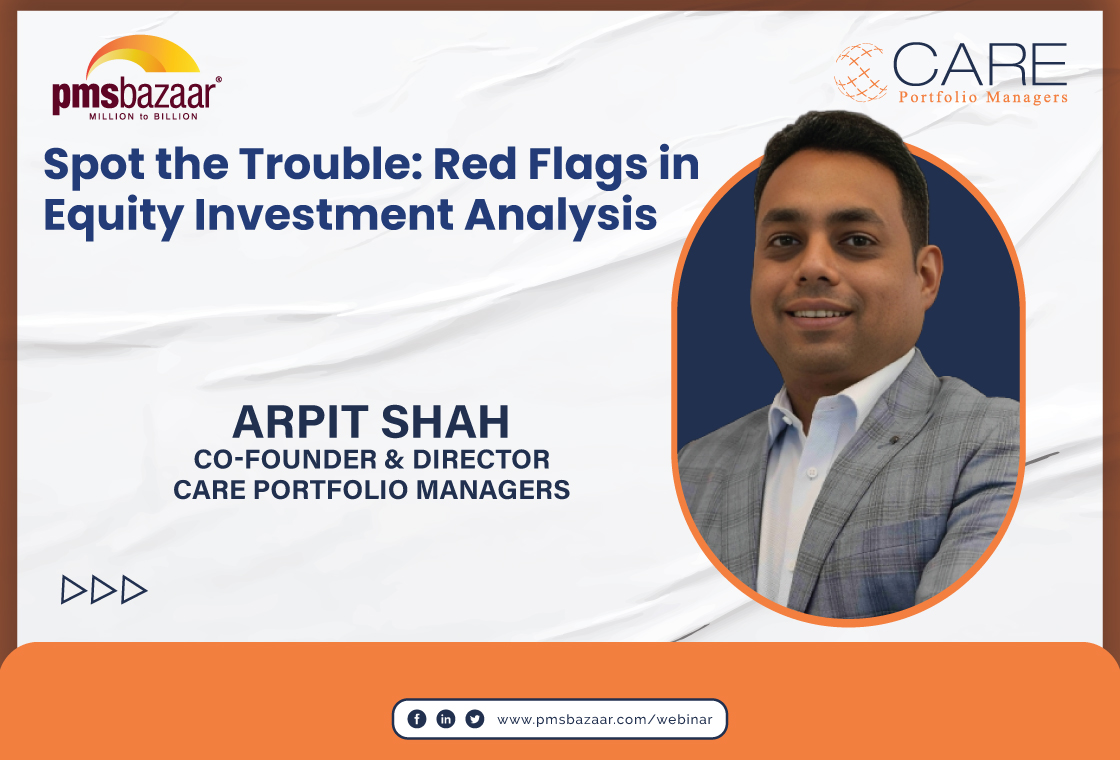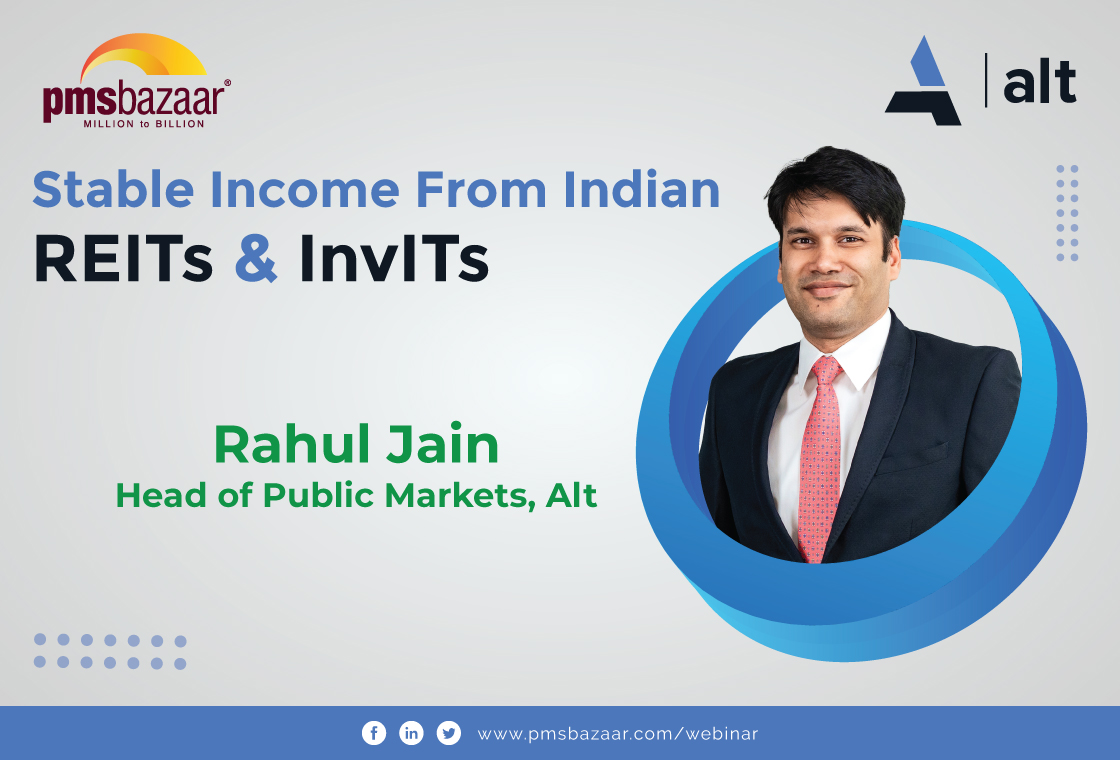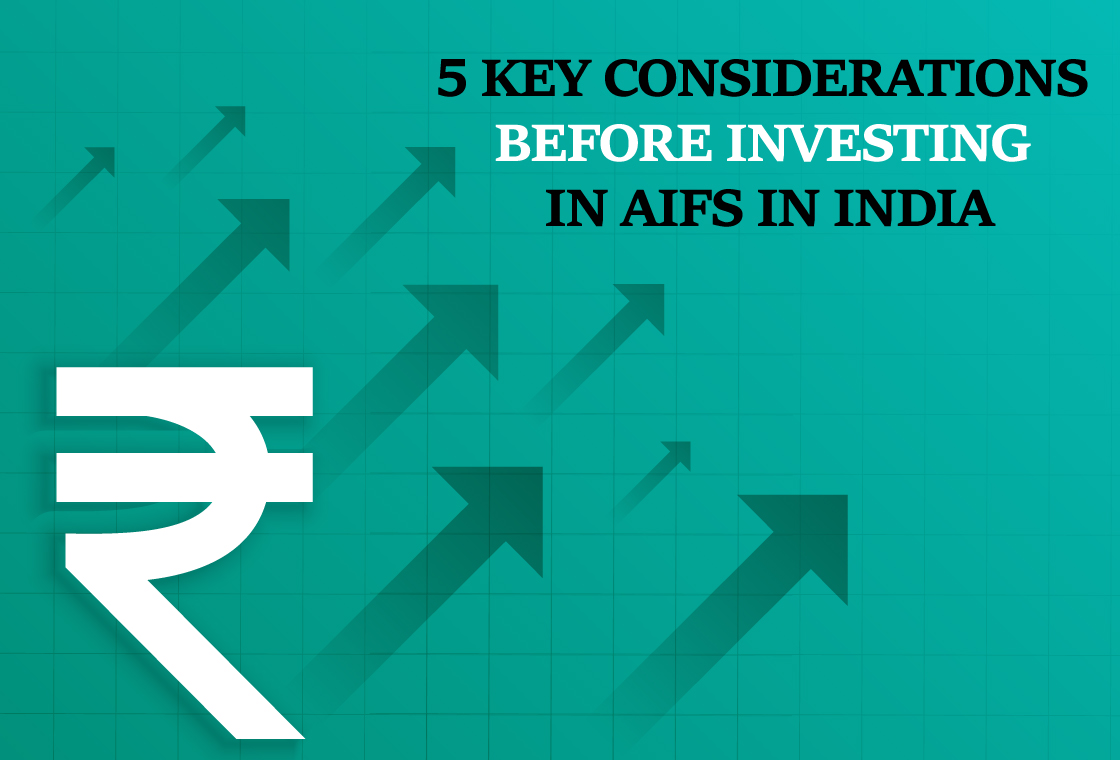Market highs can be both exciting and unnerving for investors. PMS Bazaar's recent webinar, "How to Invest When Markets are All-Time High?" tackled this question, offering guidance from expert fund managers - Vaibhav Shah and Hemal Shah of Torous Oro PMS. This blog dives into the key takeaways from the webinar, equipping you with valuable investment strategies to navigate all-time-high markets.

Key aspects covered in this webinar blog are
- Market uncertainties
- Focus on long-term growth
- Investment strategies during the market peak
- Asset allocation and risk management
- PMS strategy
Market uncertainties
Investors often face a dilemma about the right time to enter the market, especially during periods of high valuations. Vaibhav Shah highlighted this challenge of market timing but emphasised the importance of believing in India's long-term growth story. He pointed to the historical resilience of the Indian economy, demonstrating its ability to overcome downturns and propel investors towards prosperity. Recent market rebounds and stabilising macroeconomic indicators further strengthen the case for India's potential.
Looking beyond the Indian market, Shah discussed global economic trends that influence investment decisions. He mentioned factors like inflation and central bank policies that can shape the investment landscape. In this context, he stressed the importance of a balanced and diversified portfolio to navigate these uncertainties and manage risk.
Focus on long-term growth
According to Vaibhav Shah, investors should prioritise understanding the fundamental factors driving India's long-term growth, rather than getting caught up in short-term market noise. He emphasises the critical role of capital expenditure, infrastructure development, and policy reforms in propelling India towards becoming the world's third-largest economy.
Shah points to the impressive growth witnessed in various sectors over the past decade, highlighting a fivefold increase. He attributes a significant portion of this growth to the consistent rise in capital expenditure (CapEx). Drawing a parallel to the CapEx cycle of 2003-2007, he explains how increased investment creates a ripple effect across the economy. He highlights how rising CapEx stimulates manufacturing, exports, and consumption. Vaibhav Shah expresses confidence in India's path to becoming the third-largest economy, citing positive indicators like credit growth, increased public and private CapEx, and robust GST collections.
While acknowledging the challenges of short-term market uncertainties, Vaibhav Shah finds inspiration in the investment philosophies of legends like John Bogle, Warren Buffett, and Jim Simons. These figures emphasise the importance of simplicity, long-term focus, and adaptability in investment strategies. Based on their teachings, he highlights the value of value investing, momentum investing, and passive investing for generating returns (alpha) and mitigating risk. He recommends a balanced approach that combines index funds with value and momentum strategies. This approach aims to optimise returns while minimising downside risk.
Investment strategies during market peaks
Hemal Shah focused on investment strategies during market peaks, drawing insights from past, present, and future trends. He discussed the challenges and opportunities presented by each.
Looking back at the previous year, he highlighted high inflation and a value-driven investment approach. He noted the rising interest in public sector units (PSUs) due to declining interest rates, alongside a rebound in GDP growth. With foreign institutional investor (FII) allocations at a low but potentially rising level, there is optimism for increased investment flows into India.
Hemal Shah anticipates future growth for growth-oriented stocks as interest rates stabilise. He expects continued momentum in this sector due to a positive outlook on GDP growth and market flows. This aligned with the belief that stable interest rates will create a favourable environment for growth-oriented investments. He emphasised the need for a dynamic investment approach, where investors stay agile and adapt to changing market conditions.
When exiting a stock…
Vaibhav Shah stressed the importance of active portfolio management when deciding to exit a stock. Factors like valuation concerns, significant events impacting the company or sector, and exceeding predetermined weightings in the portfolio can trigger partial or complete sales. This approach ensures the portfolio remains aligned with evolving market conditions. Quantitative (quant) strategies are gaining popularity in Indian markets. Drawing on data from the past two decades, Vaibhav Shah argues that quant strategies are well-suited for the Indian market. He highlights their ability to consistently generate alpha (excess returns) despite market volatility, offering investors risk-adjusted returns across various market cycles. Recent performance reinforces their resilience, even amidst uncertainty.
To address investor concerns about market peaks, Vaibhav Shah recommends a strategic approach that includes quarterly rebalancing. This practice allows investors to adapt to changing market conditions and capitalise on new opportunities. Regular portfolio reassessment and adjustments help investors navigate market volatility with greater confidence.
Sector allocation:
Vaibhav Shah also focused on sectoral allocation, highlighting sectors with promising growth prospects even during market peaks. His bullish outlook on industrial, healthcare, and defence sectors reflects a nuanced understanding of market trends and potential growth drivers. By strategically positioning investments in these sectors, investors can tap into long-term growth potential while mitigating risks associated with broader market fluctuations.
Assessment of portfolio:
Vaibhav Shah underscores the importance of data-driven assessment and continuous monitoring of volatility for risk management. This approach allows investors to identify and respond to potential risks in real-time, ensuring portfolio resilience in the face of market uncertainties. Active portfolio rebalancing also emerges as a critical strategy, enabling investors to adjust asset allocations based on evolving market dynamics. By adhering to predefined risk thresholds and implementing proactive risk management measures, investors can effectively safeguard their investments while maximising returns.
Strategies for asset allocation and risk management
Hemal Shah addressed asset allocation, emphasising a balanced approach that combines different investment styles. He highlighted the complementary strengths of quantitative (quant) and fundamental investing, suggesting they can work together within a portfolio to manage risk effectively. This reinforces the importance of diversification for investors.
He also stressed the need to review current allocations in light of market conditions. While acknowledging the historical success of value investing for long-term wealth creation, he suggests considering strategies that capitalise on short-term trends as well. This dynamic approach aims to balance risk and return, particularly in today's volatile market environment.
Shah further noted the shift towards risk mitigation strategies. He encouraged investors to revisit their portfolios and consider strategies offering better risk-adjusted returns, with a focus on minimizing downside risk. He recommended a structured portfolio combining value, momentum, and index investing to optimise returns while minimising overall portfolio risk. However, this approach is suited for investors with a long-term horizon of at least three to five years, aligning with the philosophy of gradual wealth creation and emphasising the importance of patience and commitment to the chosen investment strategy.
PMS Strategy
The webinar also explored the PMS strategies offered by Torus Oro, including the ‘all-weather’ and ‘alpha compound’ approaches. Both aim to achieve wealth creation regardless of market conditions.
The ‘all-weather’ strategy relies on established rules and momentum to invest in large and mid-cap stocks. These rules are derived from analysing historical market cycles and sectors, allowing investors to make informed decisions beyond short-term trends. This strategy incorporates different investment styles like momentum and value investing to manage risk and maximise returns. By combining these styles, investors can capitalise on market opportunities while minimising risk.
The ‘alpha compound’ strategy focuses on identifying undervalued companies with high growth potential. Examples were used to show how such companies can deliver significant returns over time. The importance of adhering to proven strategies and maintaining discipline throughout the investment journey was emphasised. These approaches can increase an investor's chances of success and achieve steady wealth growth.
Following the in-depth discussion on these topics, Vaibhav Shah and Hemal Shah concluded the session by answering questions from the audience. You can watch the recording of this insightful webinar through the link provided to gain a deeper understanding of the topics covered.
Get access to rich data and analytics of PMS & AIF by subscribing to us. Join the 60000+ investors & experts now: Subscribe NOW
Recent Blogs
.jpg)
Passively Active Investing — A Modern Investor’s Lens on ETF-Based PMS
PMS Bazaar recently organized a webinar titled “Passively Active Investing — A Modern Investor’s Lens on ETF-Based PMS,” which featured Mr. Karan Bhatia, Co-Founder and Co-Fund Manager , Pricebridge Honeycomb ETF PMs. This blog covers the important points shared in this insightful webinar.

Spot the Trouble: Red Flags in Equity Investment Analysis
PMS Bazaar recently organized a webinar titled “Spot the Trouble: Red Flags in Equity Investment Analysis,” which featured Mr. Arpit Shah, Co-Founder & Director, Care Portfolio Managers. This blog covers the important points shared in this insightful webinar.

Long-Only AIFs Rebound Sharply in October; Long-Short Strategies Lag Despite Lower Volatility
106 long-only AIFs averaged 3.68% vs 32 long-short AIFs at 2.7%; only 24–31% of funds beat key indices

Markets log strongest monthly gains in 7 months; PMS performance turns near-uniform in October
Nifty 50 TRI gained 4.62%, BSE 500 TRI rose 4.27%; 415 of 427 equity PMSes ended positive

How SMEs are Shaping India’s Investment Landscape?
PMS Bazaar recently organized a webinar titled “How SMEs are Shaping India’s Investment Landscape?” which featured Mr. Shrikant Goyal, Fund Manager, GetFive Opportunity Fund.

Stable Income from Indian REITs and InvITs
PMS Bazaar recently organized a webinar titled “Stable Income from Indian REITs and InvITs,” which featured Mr. Rahul Jain, Head of Public Markets, Alt.

5 Key Considerations Before Investing in AIFs in India
Alternative Investment Funds (AIFs) have emerged as a compelling option for sophisticated investors seeking diversification and potentially superior returns. But venturing into AIFs requires a clear understanding of their unique characteristics that go beyond simply knowing what they are and their categories.

How AIF can help in diversification?
Traditionally, Indian investors have relied on a mix of stocks and bonds to build their wealth. While this approach offers diversification, it can still leave your portfolio vulnerable to market fluctuations. Enter Alternative Investment Funds (AIFs), a dynamic asset class gaining traction for its ability to unlock diversification beyond the realm of conventional options.

